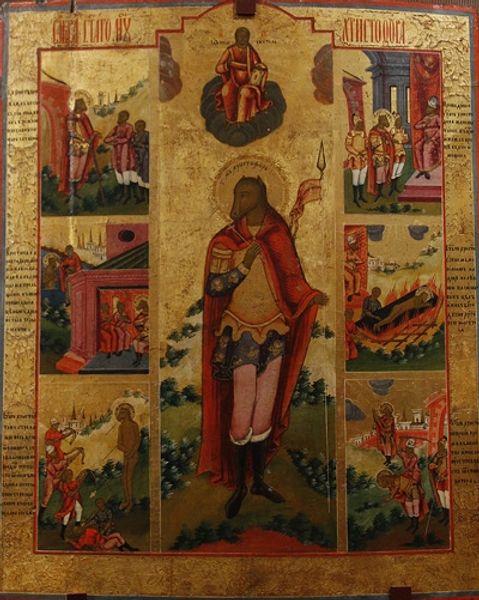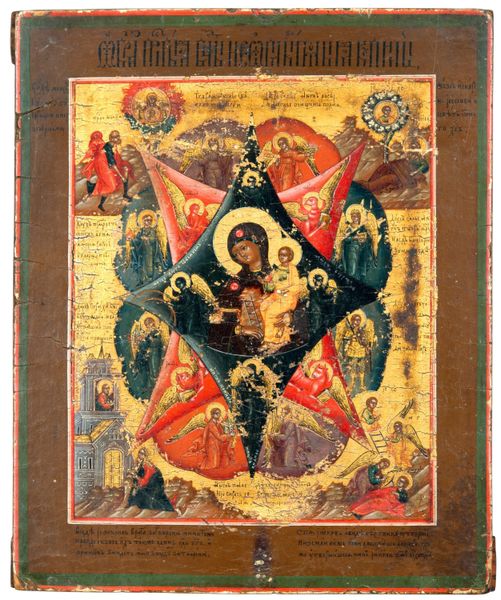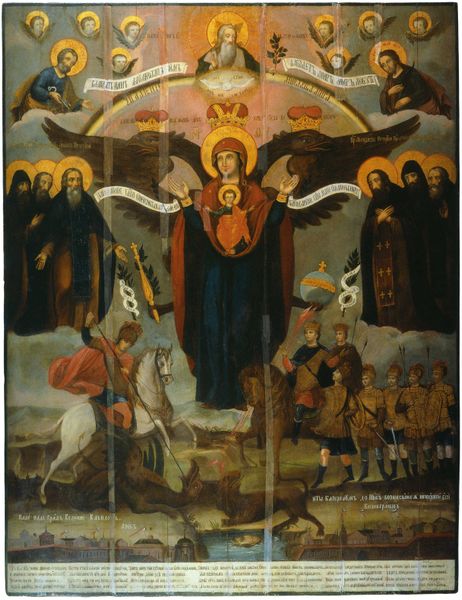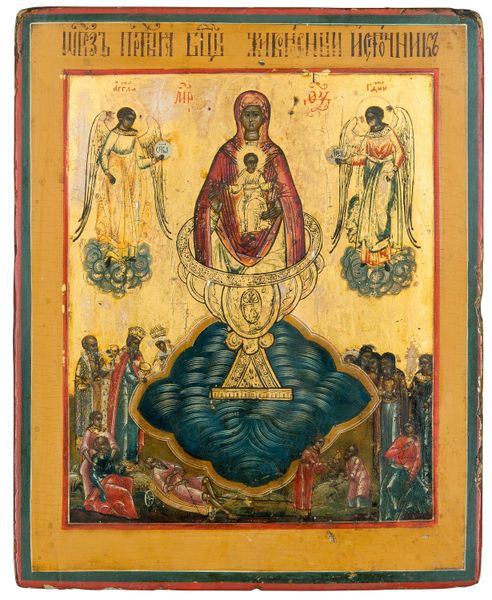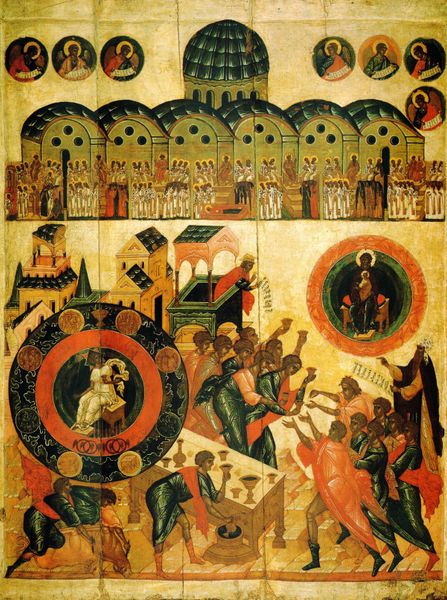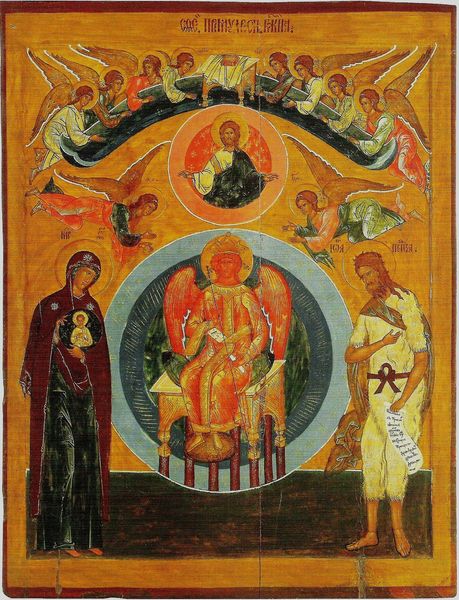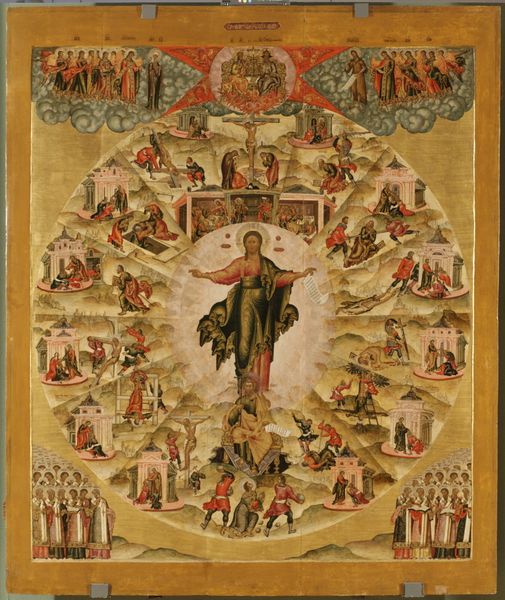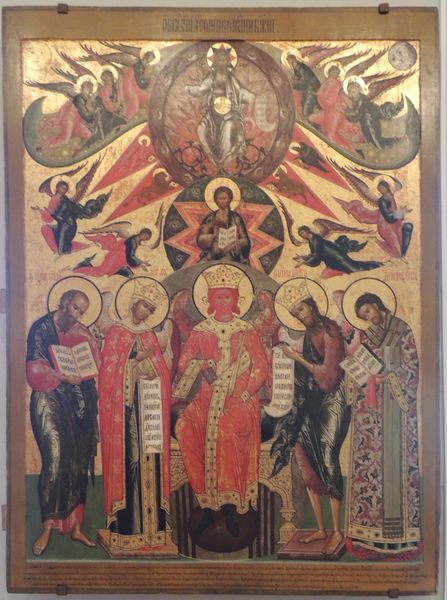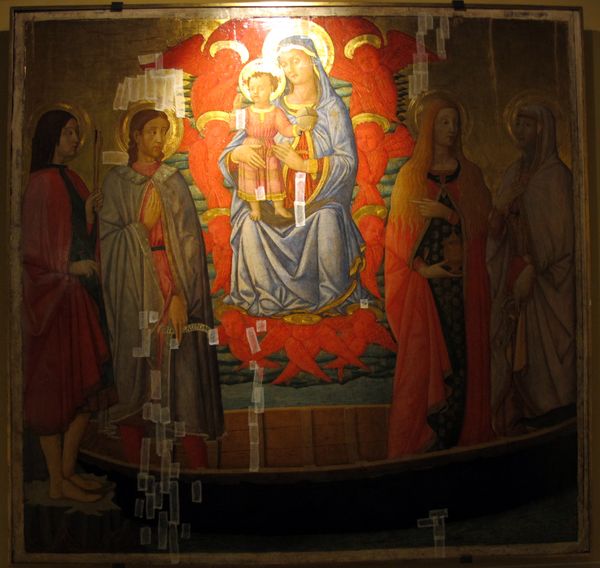
tempera, painting
#
byzantine-art
#
medieval
#
narrative-art
#
tempera
#
painting
#
figuration
#
oil painting
#
history-painting
Copyright: Orthodox Icons,Fair Use
Curator: Here we have an icon of Saint Catherine, dating back to around 1300. It’s currently located at Saint Catherine’s Monastery, at Mount Sinai, and is created with tempera. Editor: The richness of the gold leaf immediately strikes me. It really makes Saint Catherine seem otherworldly, almost transcendent. What draws me in further is how her figure dominates the central panel, surrounded by these miniature scenes depicting moments of her life and martyrdom. Curator: Precisely. That composition follows iconographic tradition, placing Saint Catherine at the apex of her own narrative. Looking closely at those scenes, you will notice details like her debate with pagan philosophers before Emperor Maxentius, and, of course, the infamous breaking wheel. The imagery around her martyrdom reflects the complex relationship between political power and faith that characterized the medieval period. Editor: The breaking wheel is such a potent symbol! But her gesture – it’s quite interesting that she almost seems to be pointing towards a globe below the cross and the wheel, emphasizing knowledge over brutality, intellect over torture, or, at least, the promise of her knowledge surviving brutality in the mind of a saintly reader of this image. That pose is definitely charged with meaning. Also the way her robes almost suggest royalty, a kind of intellectual royalty. Curator: That is definitely correct. Iconography of Saint Catherine frequently draws on this visual vocabulary of power and authority. This imagery helped legitimize both spiritual and, by extension, secular structures that embraced her as a patron. We have to remember, of course, that images themselves possessed social agency. Editor: True. And to reflect again on the wheel: in later periods we often see Saint Catherine trampling it under foot. Is that a power shift related to the place of female authority in that same structure? Here she looks quite serene even if everything is broken and falling apart. Curator: It does point to that. This serenity shows how power still flows towards her – in the Byzantine context and its subsequent echoes, divine grace mediates through the icon and those it depicts, giving these individuals very real, continued influence in both mundane and celestial power dynamics. Editor: It's fascinating how a single image can carry such immense cultural weight. It certainly shifts one's understanding. Curator: Indeed. Considering Saint Catherine’s Monastery as a locus for the icon only enriches this experience further. A site of cultural and political negotiation between Byzantium and the Islamic world is present right in her depiction.
Comments
No comments
Be the first to comment and join the conversation on the ultimate creative platform.
